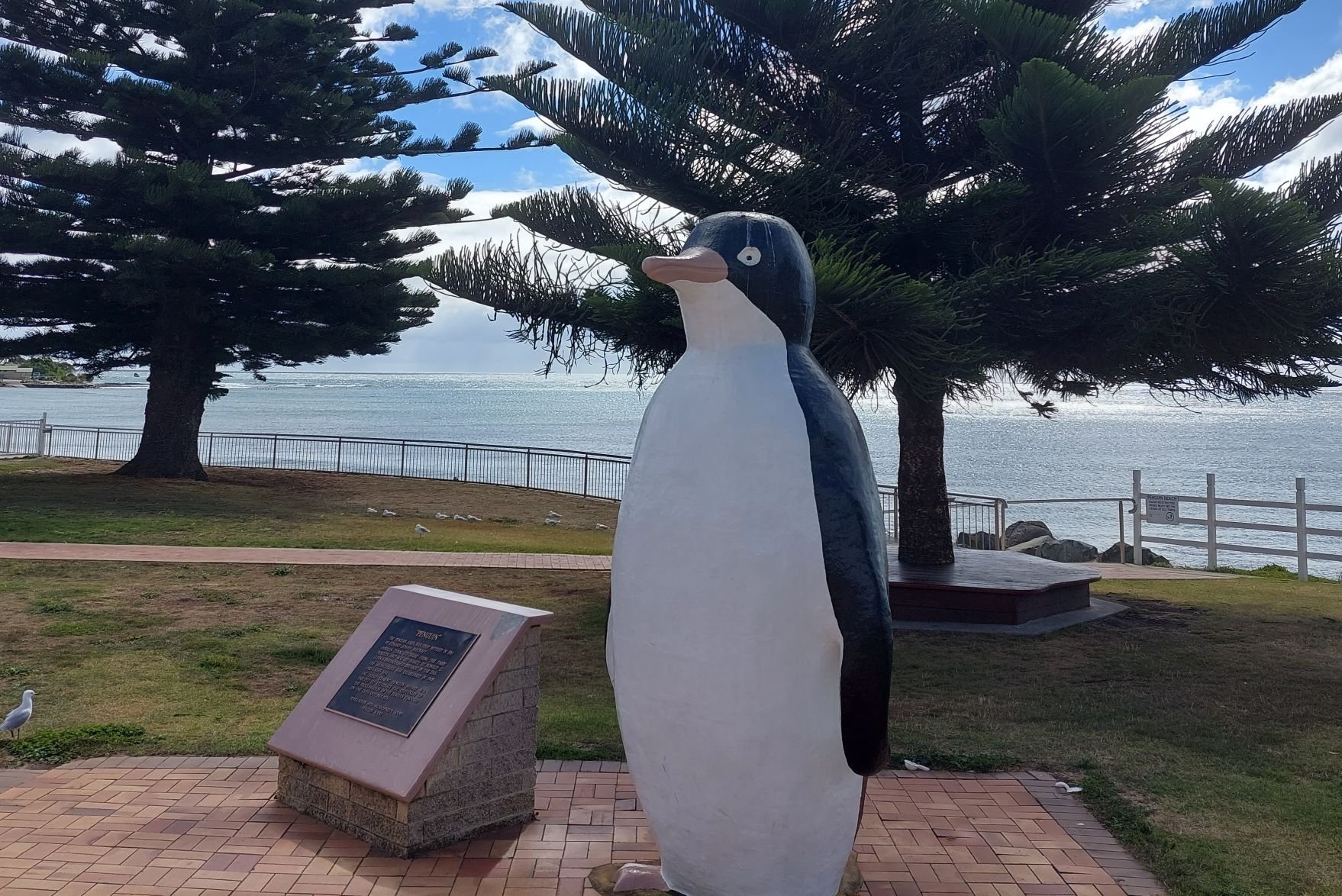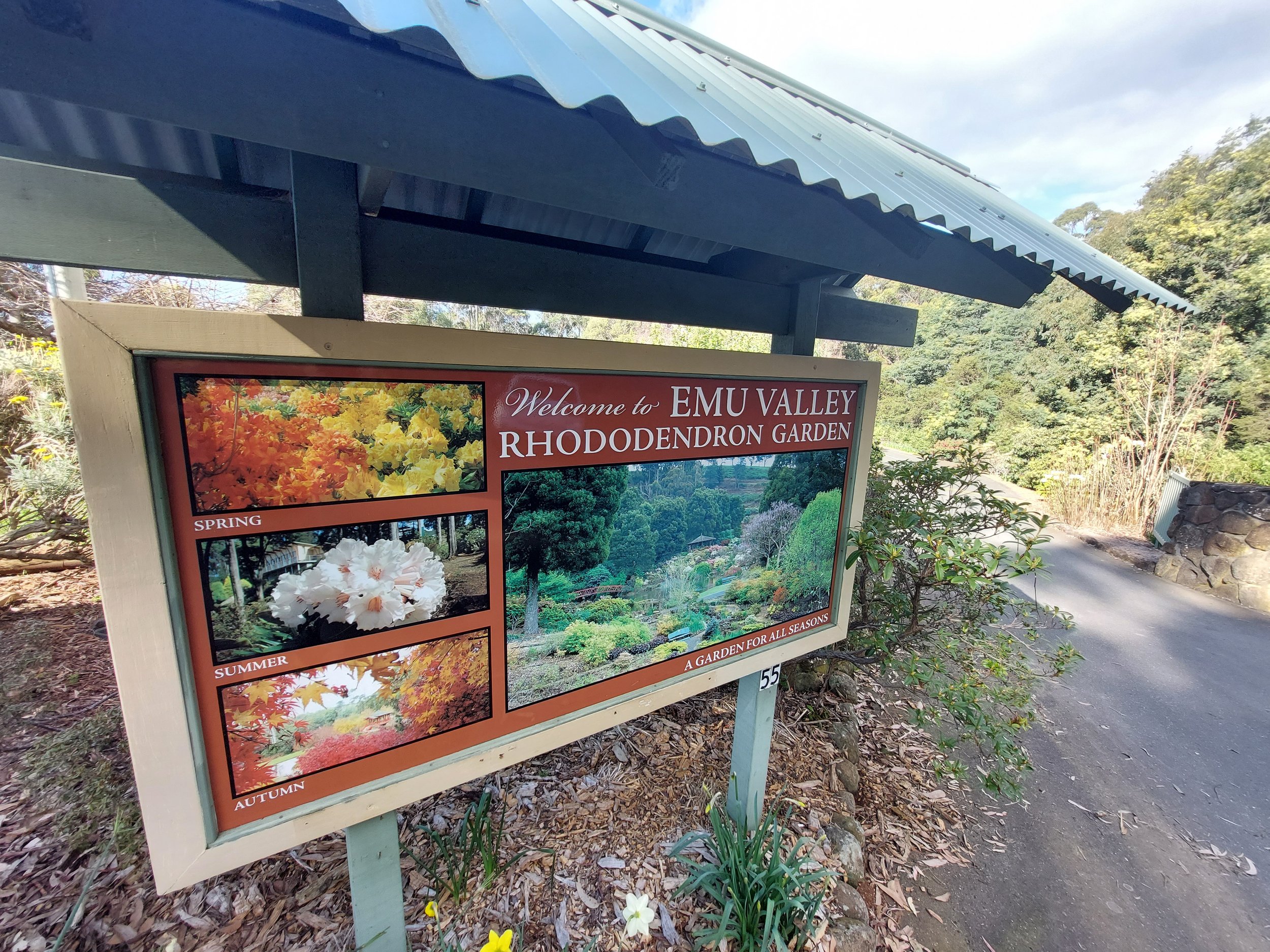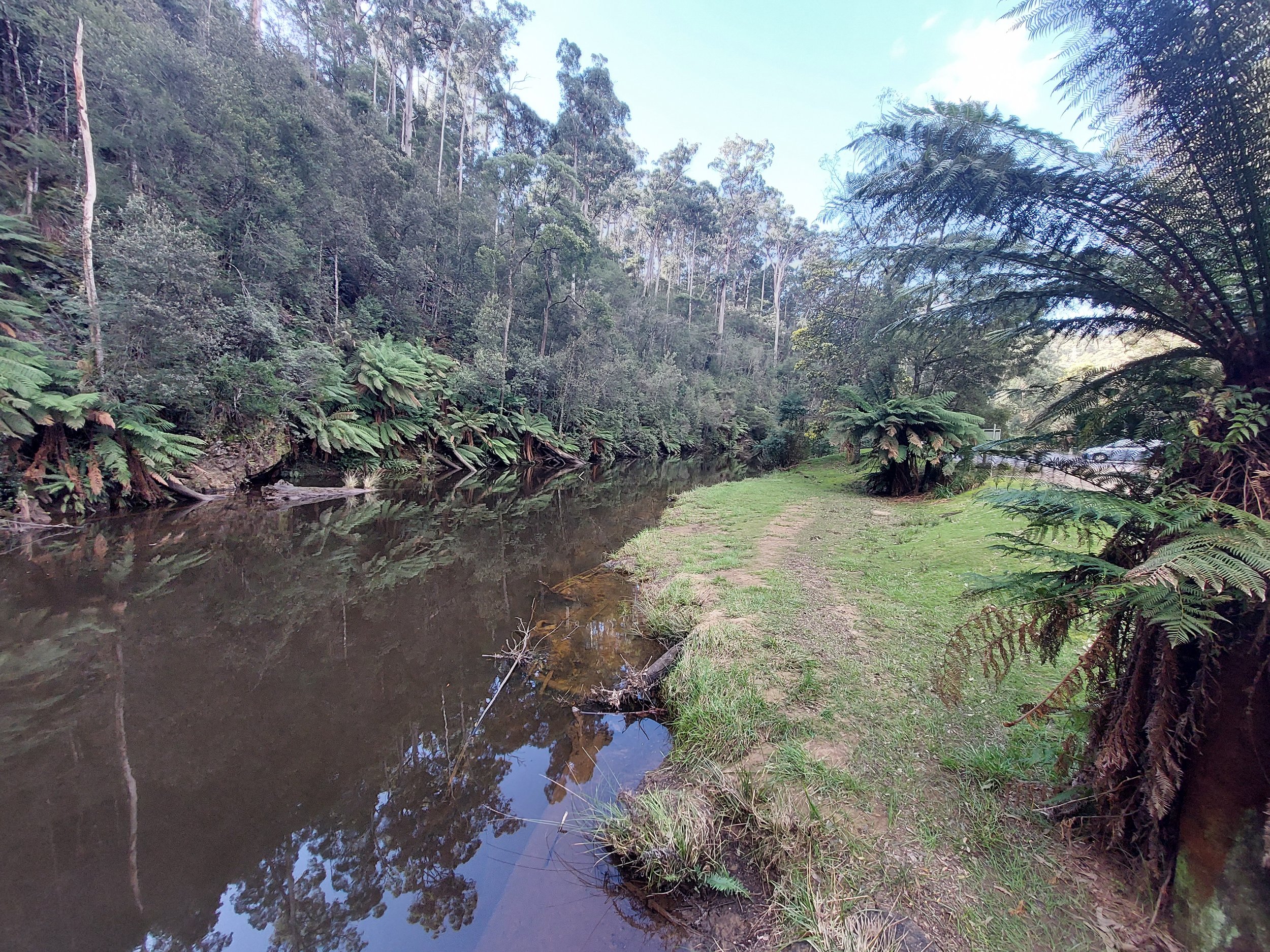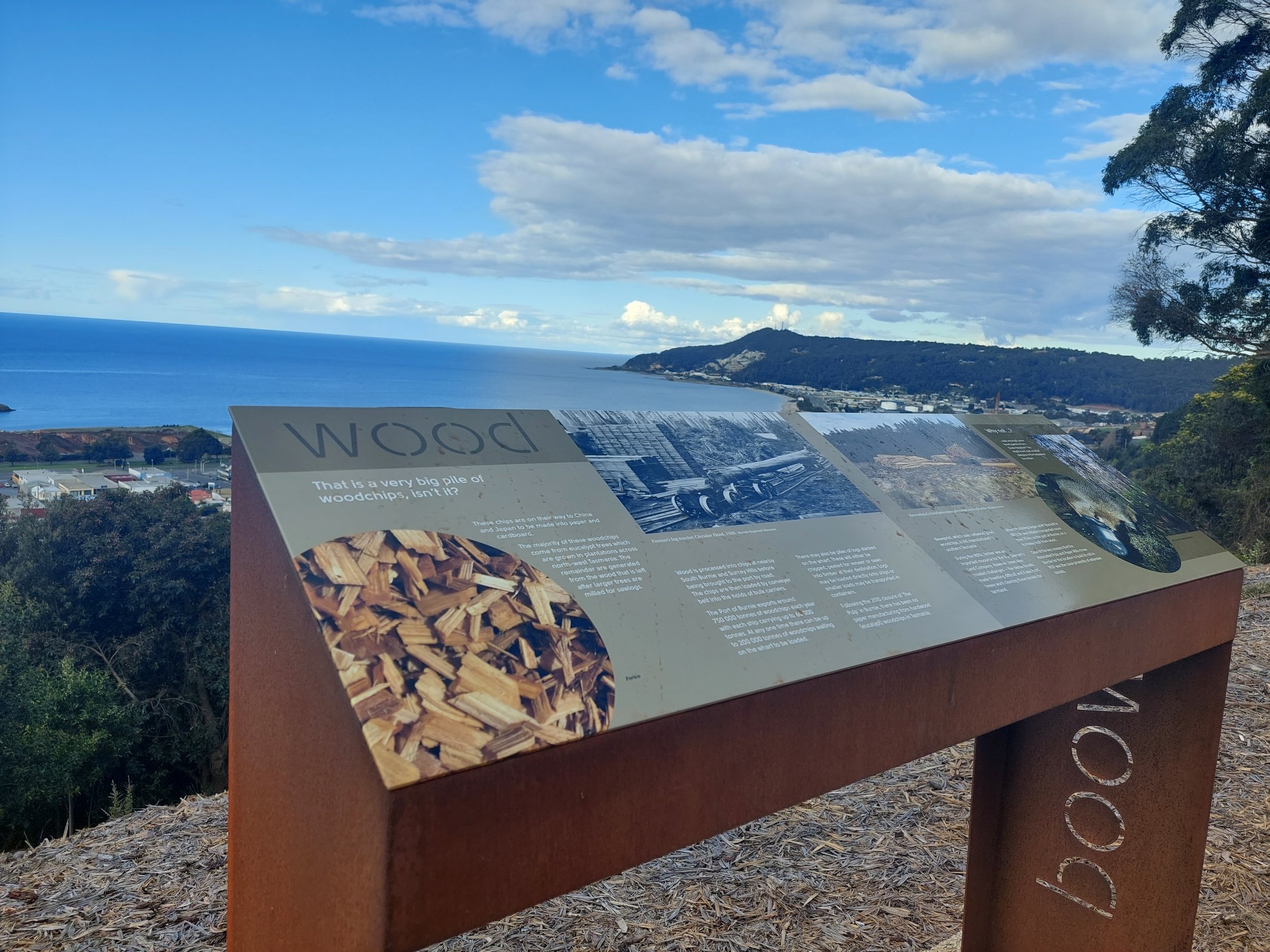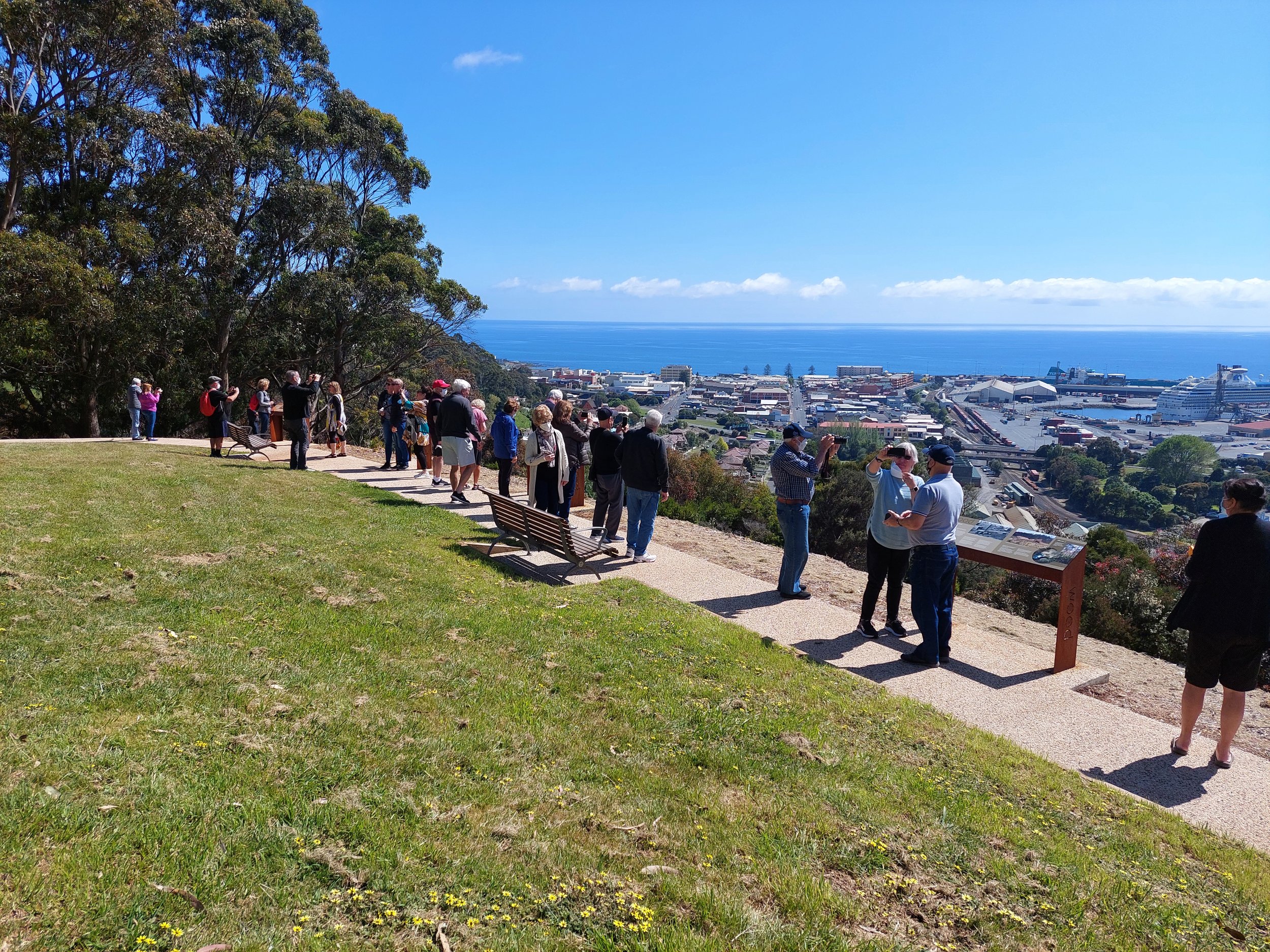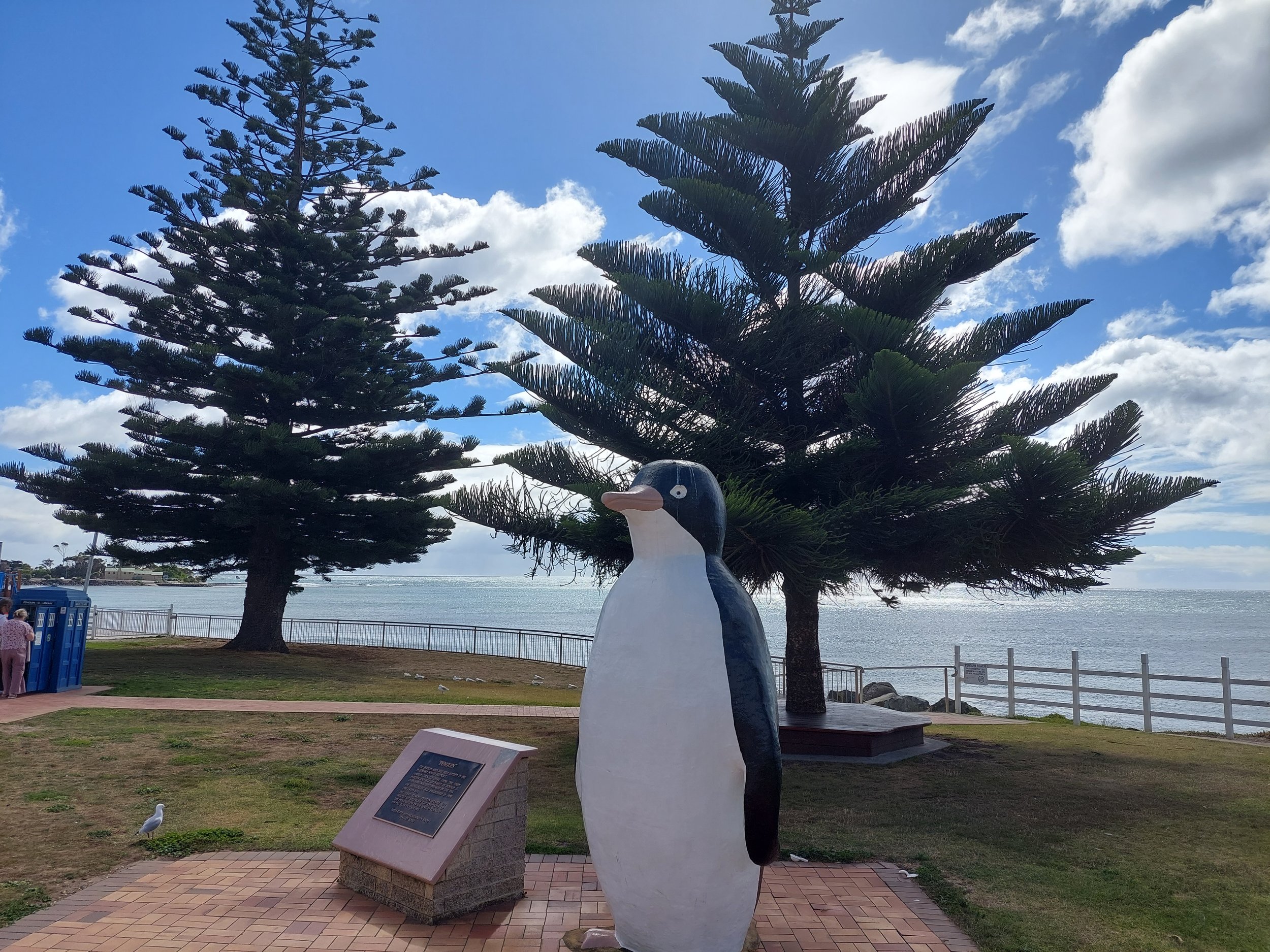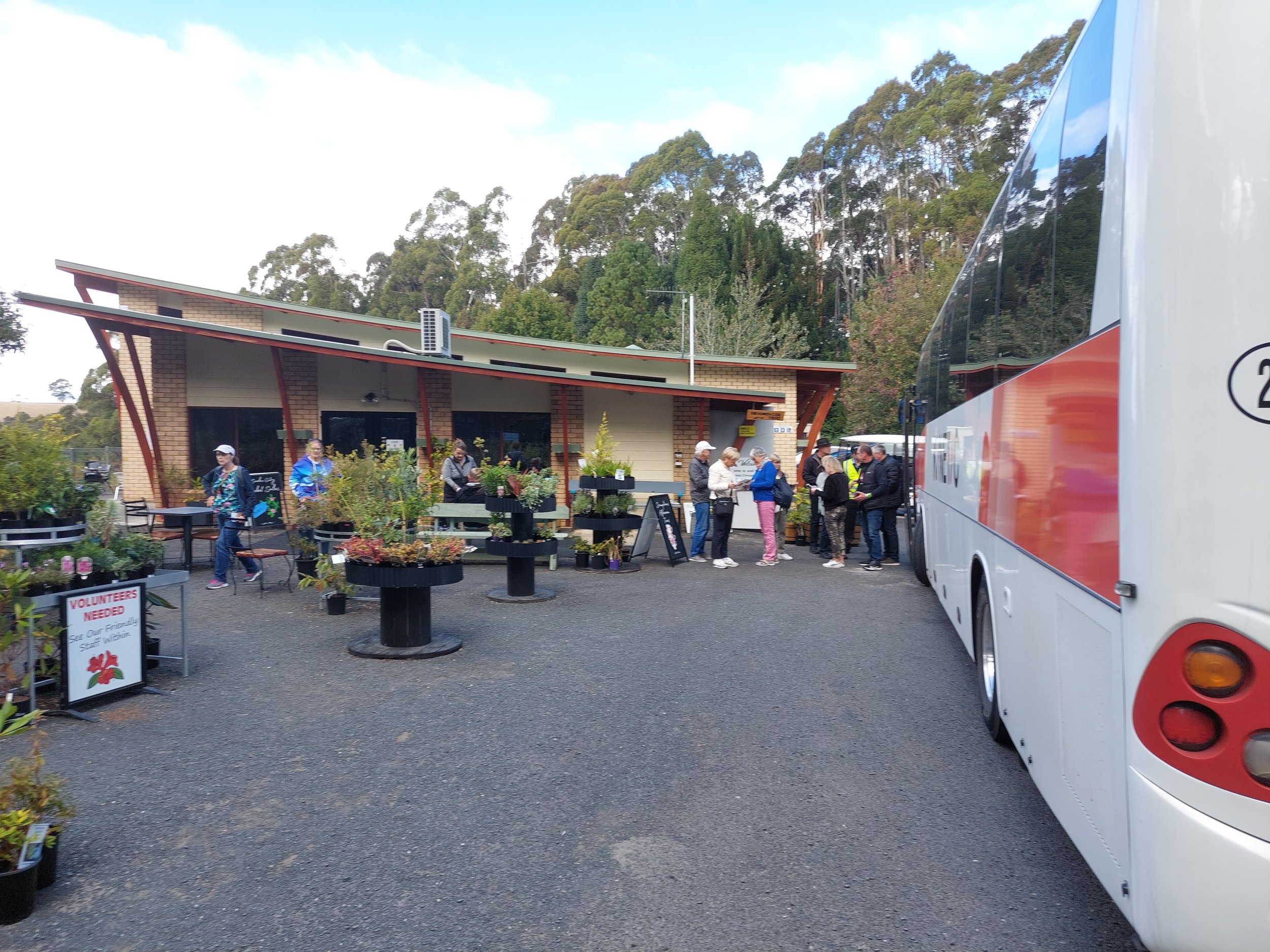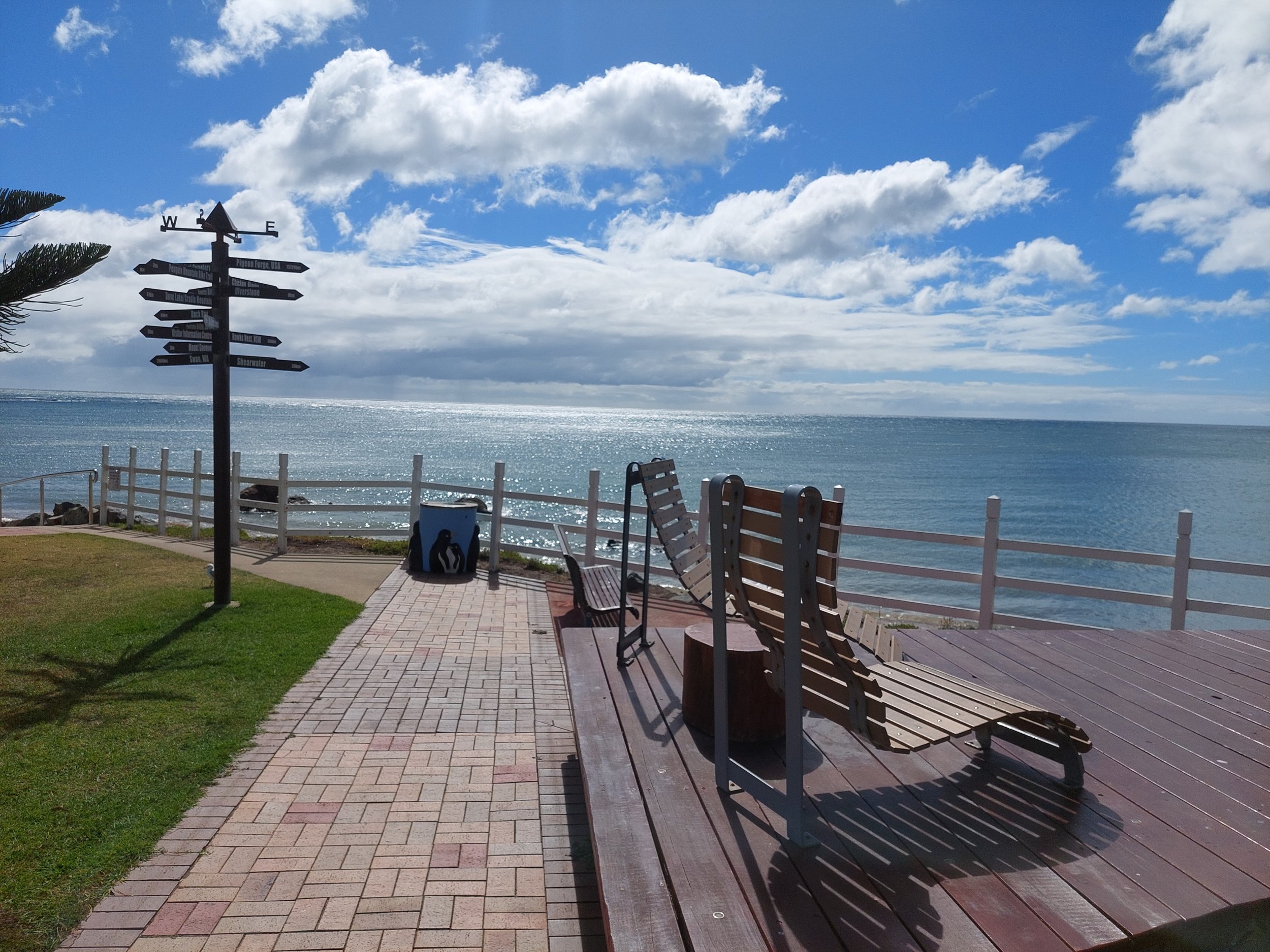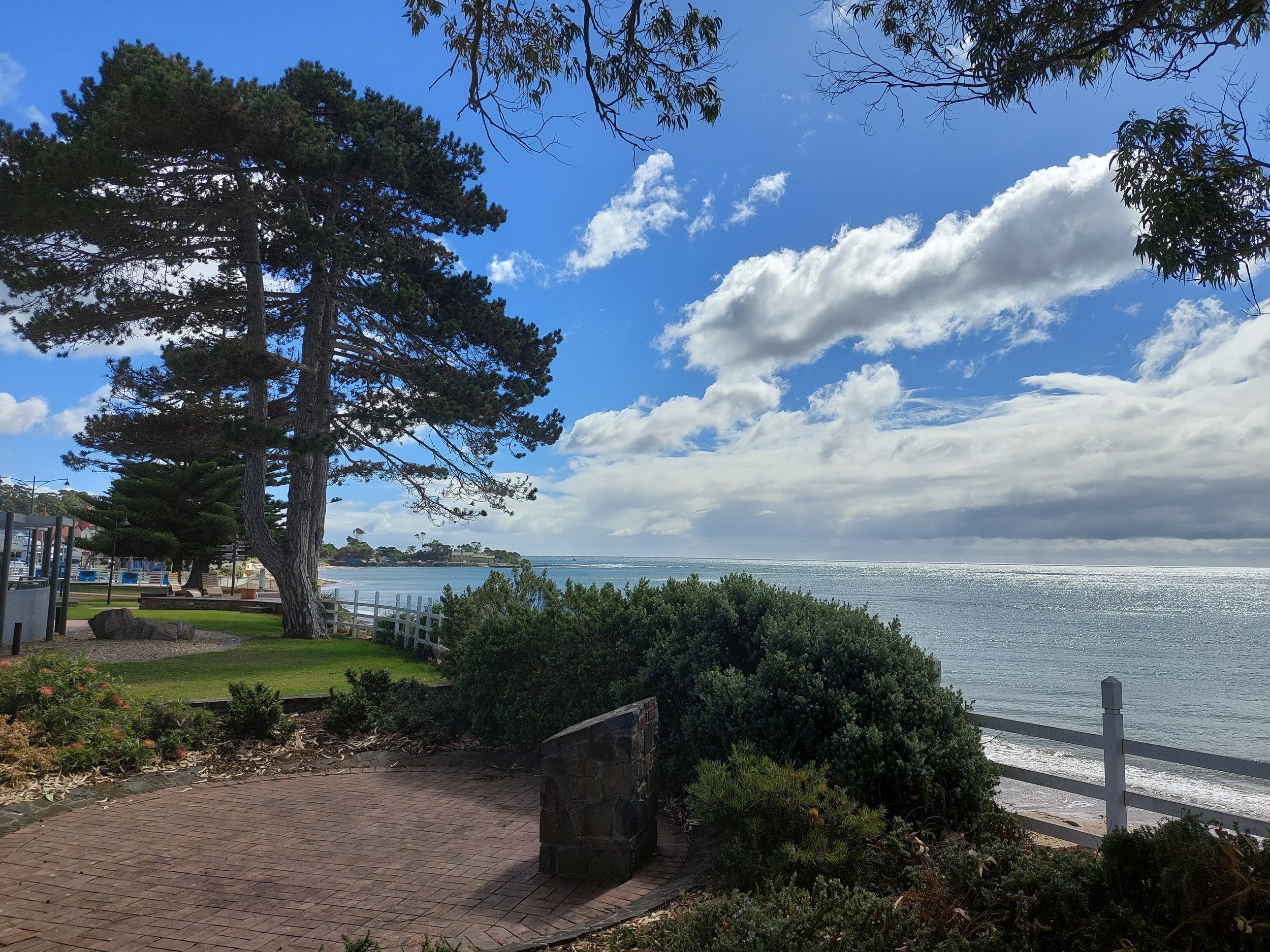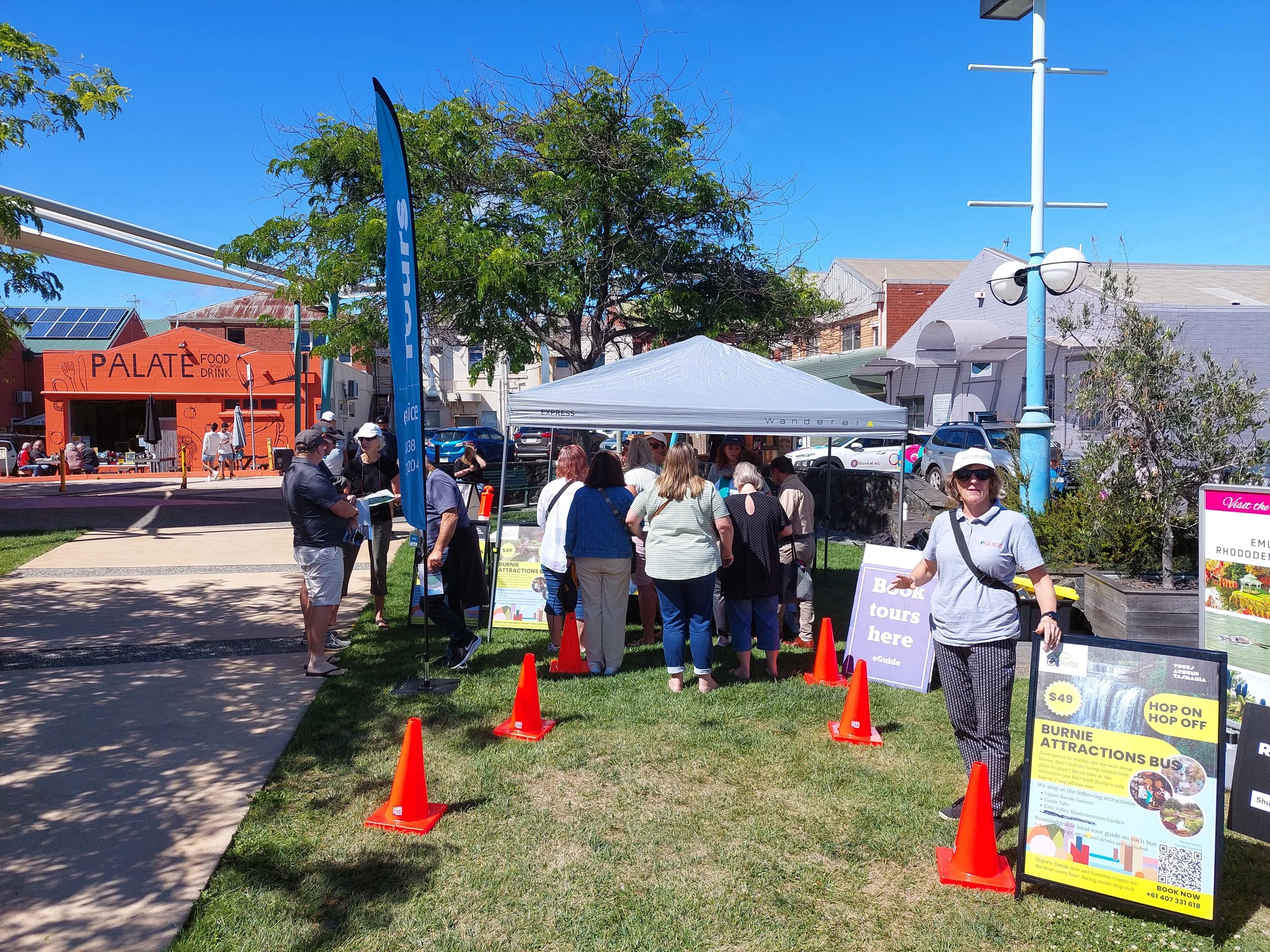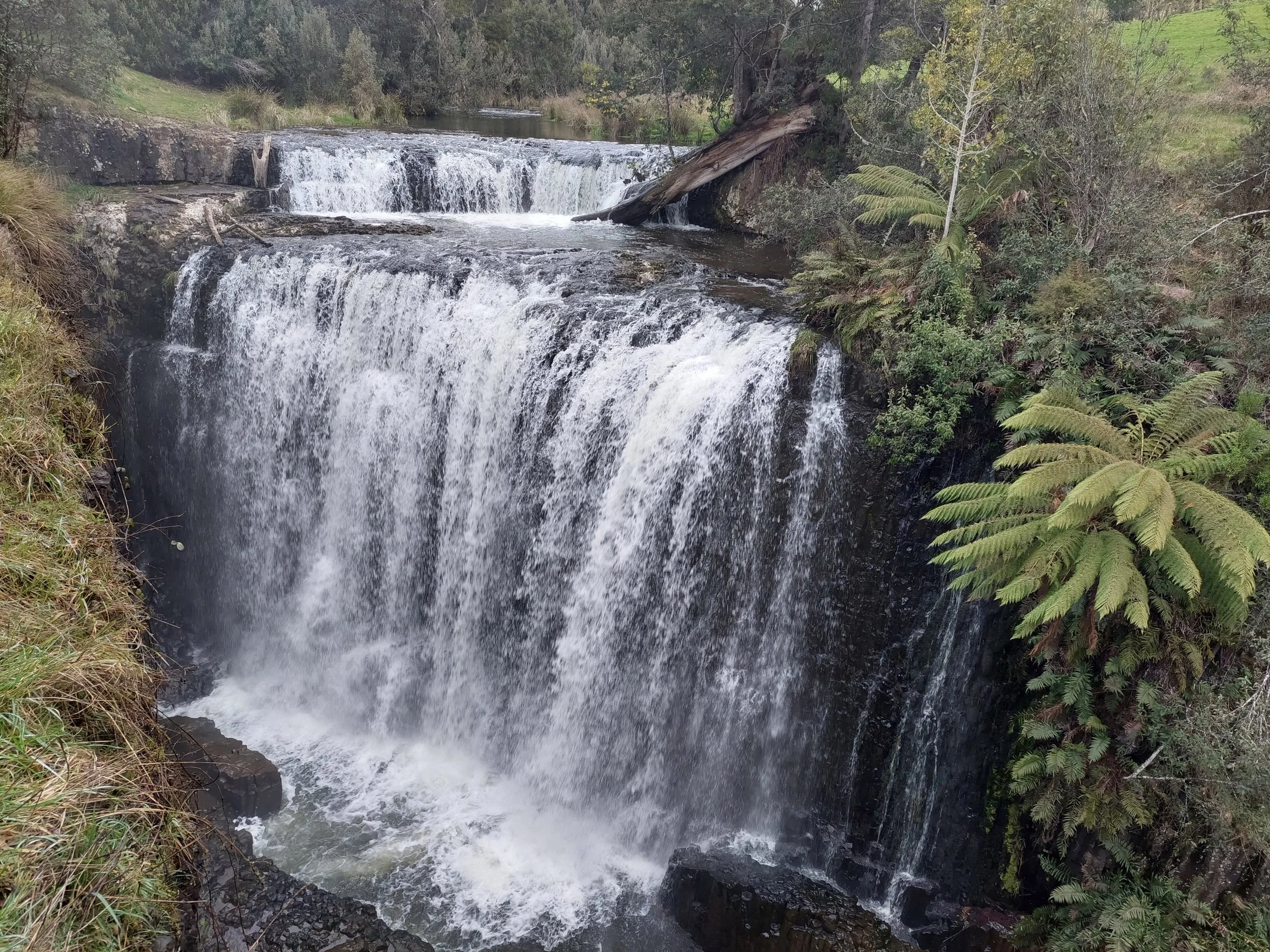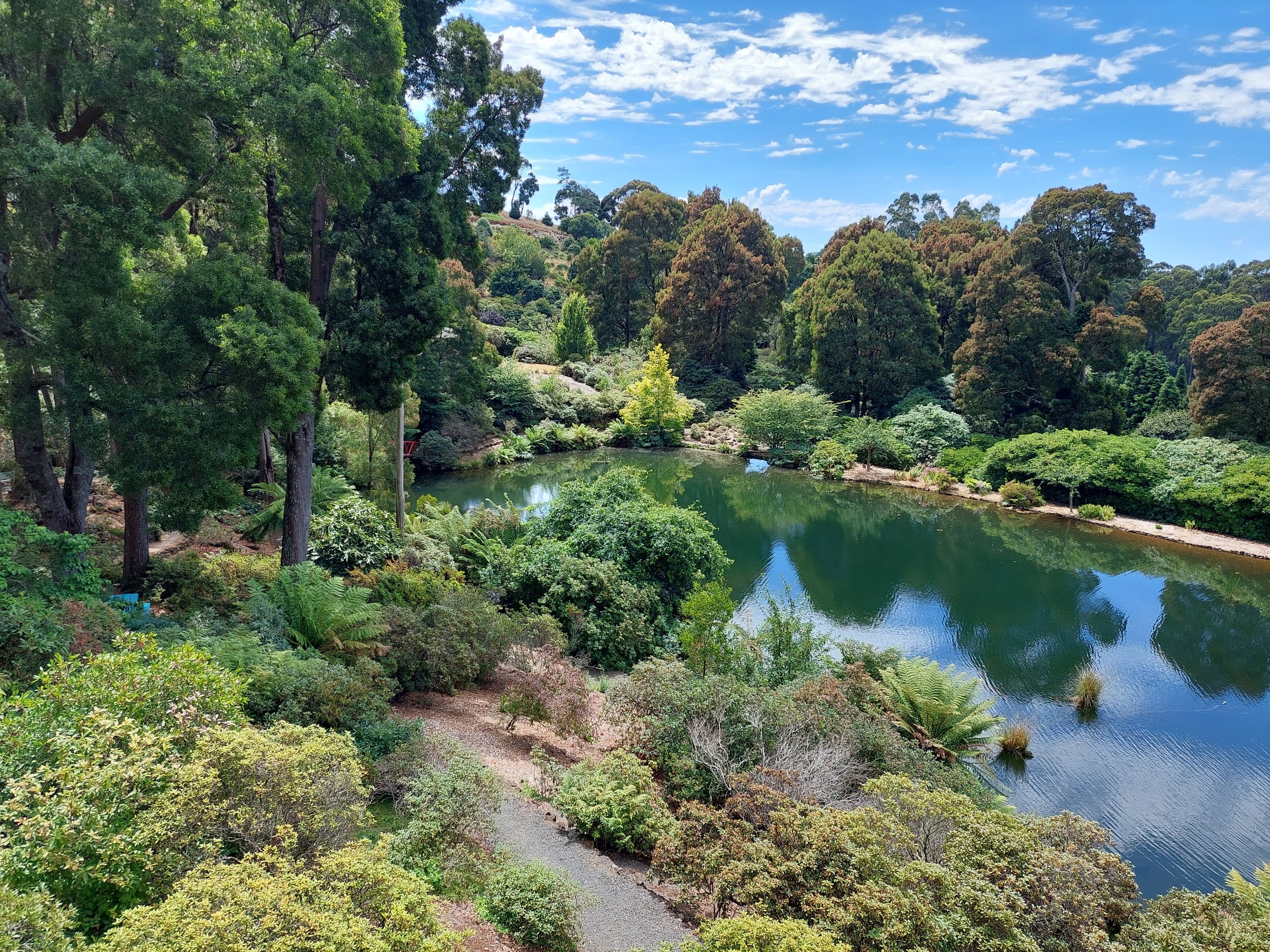
Burnie Attractions Bus
The perfect Burnie Shore Excursion
Short on Time, Big on Discovery: Unveiling Burnie's Best in Just 2 Hours
Join us on a journey through Burnie aboard our Burnie Attractions Bus! A Burnie Shore Excursion designed to provide a leisurely and immersive experience with a variety of brief stops, our two-hour guided tour is ideal for cruisers eager to discover the heart of Tasmania's northwest coast and learn from our knowledgeable local guide. The most popular Burnie shore excursion by far!
Departing multiple times daily, you can rest assured that you'll make it back to your cruise ship with ample time to spare. Our standby backup vehicle ensures a worry-free excursion, ensuring no missed departures in Burnie.
Tour Highlights:
Hilltop Vista Point: Begin your adventure with a picturesque drive to the Upper Burnie Lookout, offering sweeping views of the Bass Strait and the harbour. Don't forget to capture a photo of your cruise ship below! (5 minutes)
Emu Valley Rhododendron Gardens: Immerse yourself in Tasmania's natural beauty at the renowned Emu Valley Rhododendron Gardens. Spanning 11 hectares, this botanical paradise showcases a stunning array of rhododendrons, azaleas, and exotic flora. Marvel at the vibrant colors and serene beauty, with towering trees and cascading waterfalls providing a stunning backdrop. Keep your eyes peeled for a platypus in its natural habitat! (30 minutes)
Fernglade Sanctuary: Explore the tranquility of Fernglade Sanctuary, where pristine wilderness meets abundant wildlife. Encounter native marvels like the elusive platypus and colorful birdlife, offering a glimpse into Tasmania's wilderness. (10 minutes)
Quaint Village of Penguin: Conclude your journey with a brief visit to the charming seaside village of Penguin, known for its adorable little penguin colonies. Take in the scenic promenade and sandy beaches, and don't miss the chance to snap a photo with the iconic Penguin sculpture, immersing yourself in the welcoming community atmosphere and coastal allure. (10 minutes)
Historical Museum: Our final stop is the museum featuring a reconstructed street depicting Burnie's 19th-century appearance. Admission is complimentary. If you choose to disembark here, a 5-minute walk to the shuttle bus is required.
Experience the true essence of Tasmania's northwest coast with our Burnie Attractions Bus Shore Excursion. Secure your spot now for a fulfilling and unforgettable journey!
BOOK CLICK HERE
For any help and advice please contact david@eguide.com.au
TICKETS ARE ALSO ON SALE ON THE DAY FROM THE EGUIDE TOUR DESK
A little about Burnie
The lands that we will pass through were originally home to the Palawa people who were cut off from the mainland when sea levels rose and created the Bass Strait about 10,000 years ago. Across Tasmania, there were around 48 different groups of Indigenous peoples and at least four distinct languages were spoken.
The area is rich in pigments, particularly ochre, which was ground up and used by the Indigenous people for body decorations and protection from the elements, as well as to paint the sheets of bark that lined their dwellings. It’s thought that many of the roads in the area were originally established by the Indigenous people as tracks to access their ochre mines. They were known to use “fire-stick farming”, which was a method of burning vegetation so that they could move from place to place more easily, as well as hunt for wombats and wallabies.
Burnie was first settled by Europeans in 1827 who referred to it as Emu Bay, as they saw emus grazing along the banks of the river. It takes its current name from William Burnie, who served as a director of the Van Diemen’s Land Company in the early 1840s. The Van Diemen’s Land Company was a collection of London Merchants who established the area’s wool-growing industry to meet the supply needs of Britain’s textile industry.
William Burnie was one of the company’s directors and originally hailed from Machram in Scotland where he worked in the family’s stonemasonry business. He moved to London in the 1820s and was responsible for the construction of several buildings in the affluent London areas of Mayfair and Park Lane, which you might be familiar with from the board game “Monopoly”.
During the early days of European settlement, there was intense conflict between the area’s indigenous peoples and the colonial workers of the Van Diemen’s Land Company, which also employed convict labourers. One of the worst massacres of Indigenous peoples in Tasmania took place at Cape Grim, which is around two hours’ drive west of Burnie, while another occurred at Cooee Point near the University of Tasmania Burnie campus.
A year after Burnie was settled, a government-appointed surveyor advised that the land at Emu Bay would be a suitable location for a shipping port. Soon, the first store was established, together with a jetty, a saw pit and several huts. A dirt road was built to connect the port with housing for Van Diemen’s Land Company employees and the land that is now Oakleigh Park was cleared to cultivate potatoes and wheat. The captains of small trading schooners would purchase the potatoes and sail them to Sydney, with records showing that a ton of potatoes had a wholesale value of roughly three pounds in 1871.
In the 1880s, Burnie began to flourish when mineral deposits were discovered on the west coast of Tasmania at Mount Bischoff. Initially, it was tin that was transported to Burnie on packhorses before bullock-drawn drays were used, with the journey taking anywhere from 7 to 10 days. It’s reported that the Burnie Inn, which was the first licensed tavern in the town, did a roaring trade on the back of these discoveries.
In 1878, the Van Diemen’s Land Company built a horse-drawn wooden tramway from the Mount Bischoff tin mine to Burnie. This was later upgraded with iron and steam locomotives plied the route. Eventually, this track was taken over by the Emu Bay Railway Company and was extended to Zeehan in 1900 following the discovery of silver-lead ore. By this time, Burnie’s population had boomed, with more than 1500 calling the town “home”.
One of Burnie’s most notable early residents was Captain W. Jones who worked and built schooners before becoming the landlord of the Ship Inn. He later got involved in brick making, ran a cordial factory and a ham curing works, as well as farmed around 1,000 acres of land. Captain Jones was the first chairman of the Town Board when it was established in 1898 and also built a skating rink in the community.
A pivotal moment in Burnie’s history was the construction of a pulp and paper mill in 1936, with the factory producing 15,000 tonnes of paper in its first year of operation. In 1939, an edition of “The Advocate” newspaper (which still exists today) was printed on paper from the mill and this was the first newspaper to be made from 100% eucalypt pulp. By the 1950s, the mill was employing 3,500 people and Burnie’s population soared as secondary industries such as pigment producers were established in the town.
On the flip side of this prosperity was the issue of pollution, with effluent from the local paint factory being pumped into the sea and turning it a rust-red colour. Burnie was dubbed “Tasmania’s dirtiest town” and Peter Garrett, the front man of Midnight Oil, even wrote a song titled “Burnie” that was inspired by the town’s industry-driven environmental issues.
When the pulp and paper mill downgraded its operations in the 1990s before closing altogether in 2010, Burnie’s prospects looked grim. But the town has been reinventing itself as a hub for artists and makers, as well as serving as a gateway for exploring Tasmania’s Northwest and the Tarkine Wilderness. Its once-polluted beaches are now beautifully clean, welcoming holidaymakers during the warmer months.
Burnie’s deep-water harbour still plays an important role in the city’s economy and is used to export cereals and livestock from the surrounding farms. Since the containerisation of freight transportation, Burnie has become Tasmania’s premier container port, with goods arriving here before being transported across the state. Other local industries include fish farming and processing, as well as niche and artisan agricultural operations.
Burnie shares a friendly rivalry with Devonport, which is located around 45 kilometres to the east. It was first settled by Europeans in the 1850s on the banks of the Mersey River, which was named after the Mersey River in Liverpool, England. Originally, it was divided into two settlements - Torquay on the eastern shore of the Mersey River and Formby on the west. It wasn’t until 1890 that a local vote saw them combined to form the town of Devonport.
Over time, the area’s sawmilling, coal mining and shipping industries grew and the mouth of the Mersey River was deepened to allow steamer services to come and go from Melbourne. Today, Devonport is where the Spirit of Tasmania ferry arrives and departs, having recently moved its Victorian port from Melbourne to Geelong. It’s about a 10-hour journey across Bass Strait and it’s not always smooth sailing, with strong currents between the Indian Ocean and the Tasman Sea sometimes resulting in tumultuous waters.
Today, the rivalry between Burnie and Devonport is played out on the football field, with the Burnie Dockers and the Devonport Magpies often going head to head in the grand final of the North West Football League.
We head inland to the small rural community of Ridgley, which was named by the surveyor, Henry Hellyer, in the 1920s. It boasts a beautiful setting on the banks of the Pet River, which was dammed in the 1950s to create the Pet Reservoir. “The Pet”, as it’s known locally, is a popular fishing destination, with most anglers coming to lure rainbow and brown trout.
Passing through Ridgley is the Melba Rail Line, a narrow-gauge railway that was originally constructed as part of the Emu Bay Railway. To date, it has been one of the longest-surviving and most successful private railway companies in Australia. It once ran all the way from Burnie to Zeehan but now only goes as far as Melba Flats, which is just to the east of Zeehan. Since 2009, the line has been owned and operated by TasRail, which operates freight services across the island.
Guide Falls is a picturesque cascade that tumbles along the Guide River. Tasmania is home to stunning wilderness areas and hundreds of waterfalls, with Guide Falls offering a taste of what the island has to offer. We stop stop near the upper viewing platform and a short trail leads down to the river so you can get a different perspective. A five-minute trail leads from the base of the falls to the lower picnic area, which is where the bus will pick you up.
The Emu Valley Rhododendron Garden, which was established by Tasmanian members of the Australian Rhododendron Society in the 1980s. The idea to create the garden was conceived by three men - Hilary O’Rourke, a local landowner and rhododendron breeder, Noel Sullivan, a rhododendron expert and teacher, and Bob Malone, a talented breeder and nurseryman.
The site on which the garden now sits was previously blanketed in scrub and blackberries and it took a lot of dedication and hard work to create what you see today. The garden is divided into areas based on the geographical locations where rhododendrons grow in the wild. For example, there are species from the chilly Himalayas and tropical New Guinea, as well as the Americas.
In total, the garden encompasses more than 11 hectares and is home to over 24,000 plants. The large-leafed rhododendrons begin flowering in August while mid-October marks the start of the main flowering period, which extends through to December. At other times of the year, you can see vireya rhododendrons in bloom, together with a diverse range of companion plants.
Hellyers Road Distillery, which was founded in 1997 by a group of dairy farming friends. It was named after a road that once ran through the site and took its name from the early 19th-century explorer and cartographer, Henry Hellyer. You might remember that we mentioned Henry Hellyer earlier as he was responsible for naming the community of Ridgley near Guide Falls.
Originally from Hampshire in England, Hellyer was one of the first Europeans to venture into the rugged interior of North West Tasmania. He made detailed maps along the way, as well as kept diaries that are now held in several archives. In 1831, Hellyer became the first European to reach the summit of Cradle Mountain but just a year later, he took his own life, with his diary entries suggesting he suffered from depression. In 1998, a play was written that explores his life in Tasmania and death.
Since its establishment, Hellyers Road has since grown to become one of Tasmania’s most famous whisky distilleries and in 2010, it was recognised for producing Australia’s best single malt. Not only can you taste the whiskies (and purchase a bottle or two to take home) but you can go behind the scenes on a guided tour of the distillery. There’s even the opportunity to pour and wax seal your very own bottle of whisky, complete with a certificate of authenticity.

